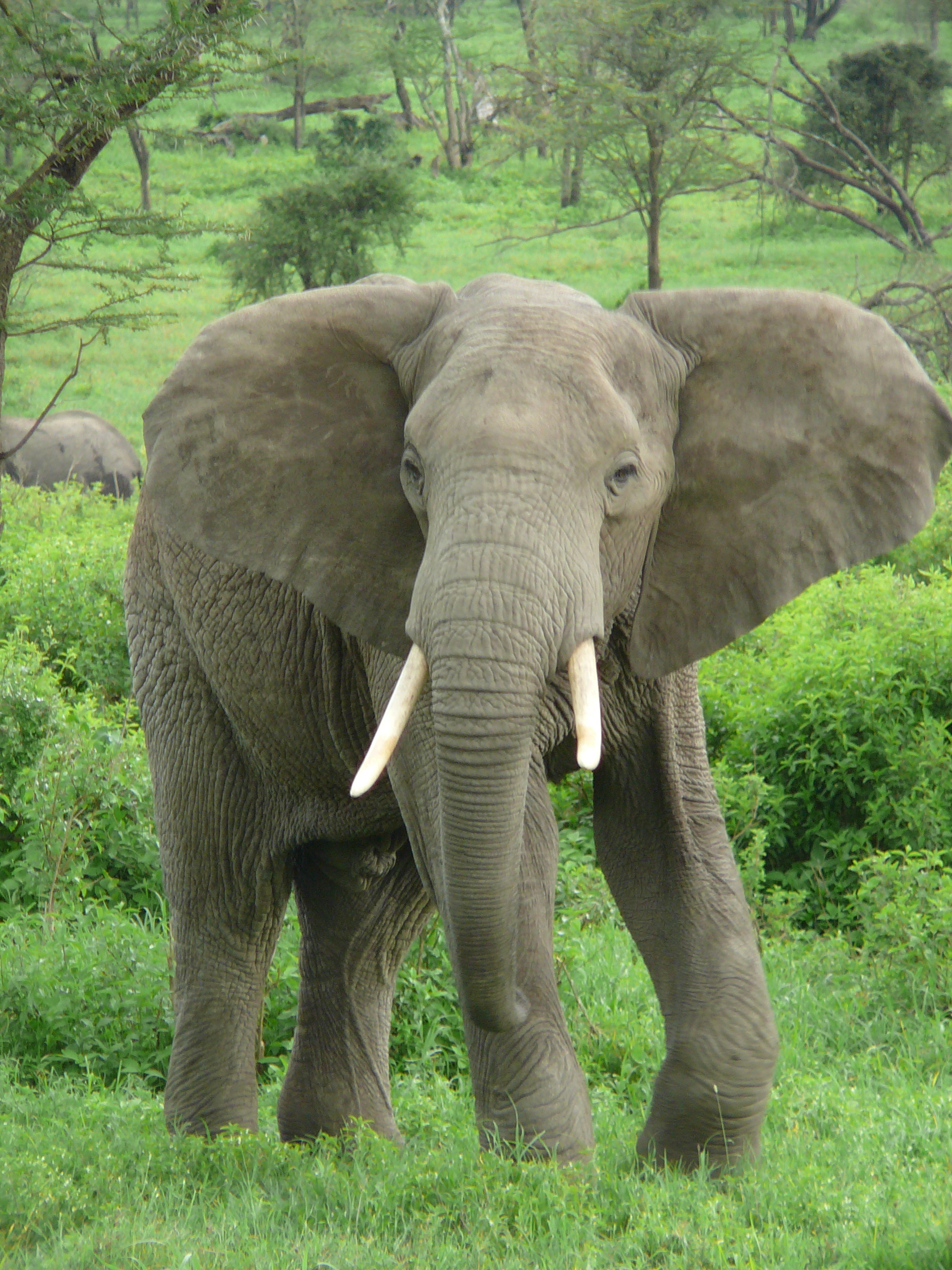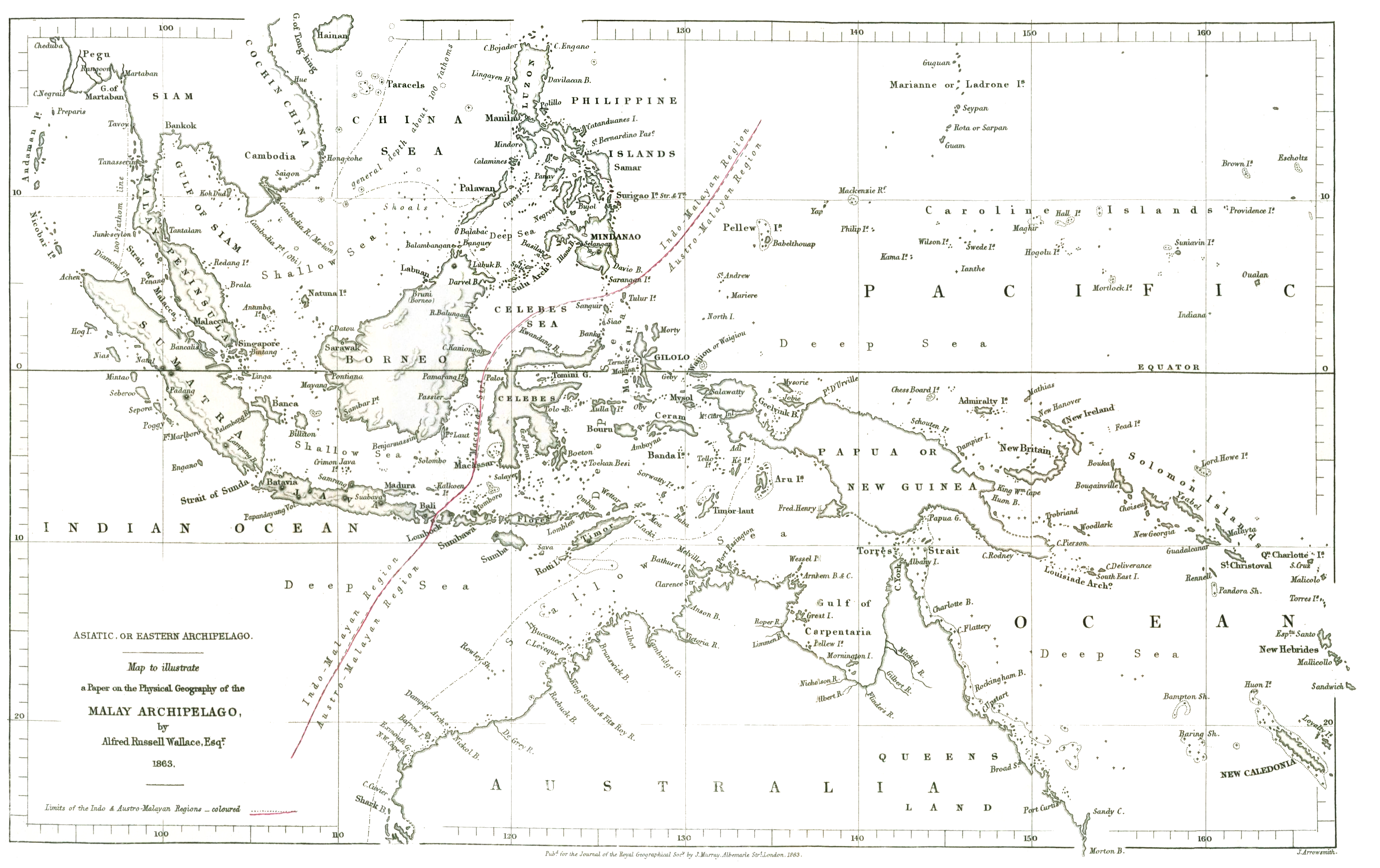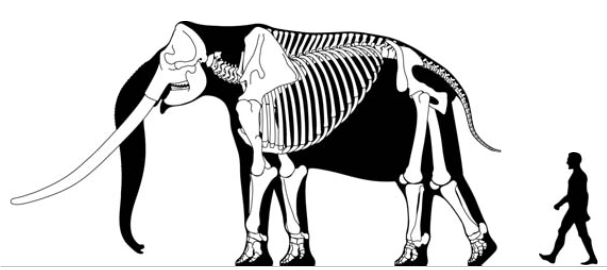|
Theodor Verhoeven
Theodorus (Theo) Lambertus Verhoeven, SVD, (17 September 1907, Uden, The Netherlands – 3 June 1990, Antwerp, Belgium) was a Dutch missionary and archaeologist who has become famous by his discovery of stone tools on the Indonesian island of Flores, in association with the c. 800,000-year-old fossils of stegodontids, or dwarf elephants, from which he concluded that islands in Wallacea had been reached by '' Homo erectus'' before modern humans appeared there. Life Born at the Markt in Uden, Verhoeven received his training as a priest/missionary in monasteries ('mission houses') of the Societas Verbi Divini (SVD) in Uden (where he was abused by the prefect), Helvoirt and Teteringen respectively. In the latter place he was ordained a priest in 1933 after which, much to his disappointment, he was not allowed to leave for a mission country. Instead he was ordered to become a teacher at his own secondary school, mission house St. Willibrordus in Uden. After that, Verhoeven studied ... [...More Info...] [...Related Items...] OR: [Wikipedia] [Google] [Baidu] |
Societas Verbi Divini
The Society of the Divine Word ( la, Societas Verbi Divini), abbreviated SVD and popularly called the Verbites or the Divine Word Missionaries, and sometimes the Steyler Missionaries, is a Catholic clerical religious congregation of Pontifical Right for men. As of 2020, it consisted of 5,965 members composed of priests and religious brothers working in more than 70 countries, now part of VITA international. It is one of the largest missionary congregations in the Catholic Church. Its members add the nominal letters SVD after their names to indicate membership in the Congregation. The superior general is Paulus Budi Kleden who hails from Indonesia. History The Society was founded in Steyl in the Netherlands in 1875 by Arnold Janssen, a diocesan priest, and drawn mostly from German priests and religious exiles in the Netherlands during the church-state conflict called the ''Kulturkampf'', which had resulted in many religious groups being expelled and seminaries being closed ... [...More Info...] [...Related Items...] OR: [Wikipedia] [Google] [Baidu] |
Flores
Flores is one of the Lesser Sunda Islands, a group of islands in the eastern half of Indonesia. Including the Komodo Islands off its west coast (but excluding the Solor Archipelago to the east of Flores), the land area is 15,530.58 km2, and the population was 1,878,875 in the 2020 Census (including various offshore islands); the official estimate as at mid 2021 was 1,897,550. The largest towns are Maumere and Ende. The name ''Flores'' is the Portuguese and Spanish word for "Flowers". Flores is located east of Sumbawa and the Komodo islands, and west of the Solor Islands and the Alor Archipelago. To the southeast is Timor. To the south, across the Sumba Strait, is Sumba island and to the north, beyond the Flores Sea, is Sulawesi. Among all islands containing Indonesian territory, Flores is the 10th most populous after Java, Sumatra, Borneo ( Kalimantan), Sulawesi, New Guinea, Bali, Madura, Lombok, and Timor and also the 10th biggest island of Indonesia. Unt ... [...More Info...] [...Related Items...] OR: [Wikipedia] [Google] [Baidu] |
Smithsonian National Museum Of Natural History
The National Museum of Natural History is a natural history museum administered by the Smithsonian Institution, located on the National Mall in Washington, D.C., United States. It has free admission and is open 364 days a year. In 2021, with 7.1 million visitors, it was the eighteenth most visited museum in the world and the second most visited natural history museum in the world after the Natural History Museum in London."The World's most popular museums", CNN.com, 22 June 2017. Opened in 1910, the museum on the National Mall was one of the first Smithsonian buildings constructed exclusively to hold the national collections and research facilities. The main building has an overall area of with of exhibition and public space and houses over 1,000 employees. The museum's collections contain over 145 million specimens of plants, animals, fossils, minerals, rocks, meteorites, human remains, and human cultural artifacts, the largest natural history collection in the world. It ... [...More Info...] [...Related Items...] OR: [Wikipedia] [Google] [Baidu] |
Fission Track Dating
Fission track dating is a radiometric dating technique based on analyses of the damage trails, or tracks, left by fission fragments in certain uranium-bearing minerals and glasses. Fission-track dating is a relatively simple method of radiometric dating that has made a significant impact on understanding the thermal history of continental crust, the timing of volcanic events, and the source and age of different archeological artifacts. The method involves using the number of fission events produced from the spontaneous decay of uranium-238 in common accessory minerals to date the time of rock cooling below closure temperature. Fission tracks are sensitive to heat, and therefore the technique is useful at unraveling the thermal evolution of rocks and minerals. Most current research using fission tracks is aimed at: a) understanding the evolution of mountain belts; b) determining the source or provenance of sediments; c) studying the thermal evolution of basins; d) determinin ... [...More Info...] [...Related Items...] OR: [Wikipedia] [Google] [Baidu] |
Mata Menge
Mata Menge is an early Middle Pleistocene paleoanthropological site located in the Ola Bula Formation in the So'a Basin on the island of Flores, Indonesia. Lithic artefacts and hominin remains have been discovered at the site. The level of sophistication of the Mata Menge lithic artefacts is described as being 'simple'.Brumm, Adam; Aziz, Fachroel; et al. (Jun 1, 2006). "Early stone technology on Flores and its implications for Homo floresiensis". Nature. 441 (7093): 624–8. doi:10.1038/nature04618. PMID 16738657. Excavations Stone Artifacts Stone artifacts make up the majority of what has been recovered from Mata Menge, most of the stone artifact evidence points towards use by the hominin ''H. floresiensis.'' The excavation by the Indonesian-Australian team in the period between 2004 and 2005 saw the excavation of over 487 stone artifacts. The stone artifacts were compared to others recovered in the 1994 excavation done by the Indonesian-Dutch team that yielded a whopping 507 ... [...More Info...] [...Related Items...] OR: [Wikipedia] [Google] [Baidu] |
Megafauna
In terrestrial zoology, the megafauna (from Greek μέγας ''megas'' "large" and New Latin ''fauna'' "animal life") comprises the large or giant animals of an area, habitat, or geological period, extinct and/or extant. The most common thresholds used are weight over see page 17 (i.e., having a mass comparable to or larger than a human) or over a tonne, (i.e., having a mass comparable to or larger than an ox). The first of these include many species not popularly thought of as overly large, and being the only few large animals left in a given range/area, such as white-tailed deer, Thomson's gazelle, and red kangaroo. In practice, the most common usage encountered in academic and popular writing describes land mammals roughly larger than a human that are not (solely) domesticated. The term is especially associated with the Pleistocene megafauna – the land animals often larger than their extant counterparts that are considered archetypical of the last ice age, such as m ... [...More Info...] [...Related Items...] OR: [Wikipedia] [Google] [Baidu] |
Lower Palaeolithic
The Lower Paleolithic (or Lower Palaeolithic) is the earliest subdivision of the Paleolithic or Old Stone Age. It spans the time from around 3 million years ago when the first evidence for stone tool production and use by hominins appears in the current archaeological record, until around 300,000 years ago, spanning the Oldowan ("mode 1") and Acheulean ("mode 2") lithics industries. In African archaeology, the time period roughly corresponds to the Early Stone Age, the earliest finds dating back to 3.3 million years ago, with Lomekwian stone tool technology, spanning Mode 1 stone tool technology, which begins roughly 2.6 million years ago and ends between 400,000 and 250,000 years ago, with Mode 2 technology. The Middle Paleolithic followed the Lower Paleolithic and recorded the appearance of the more advanced prepared-core tool-making technologies such as the Mousterian. Whether the earliest control of fire by hominins dates to the Lower or to the Middle Paleolithic r ... [...More Info...] [...Related Items...] OR: [Wikipedia] [Google] [Baidu] |
Wallace Line
The Wallace Line or Wallace's Line is a faunal boundary line drawn in 1859 by the British naturalist Alfred Russel Wallace and named by English biologist Thomas Henry Huxley that separates the biogeographical realms of Asia and Wallacea, a transitional zone between Asia and Australia. West of the line are found organisms related to Asiatic species; to the east, a mixture of species of Asian and Australian origin is present. Wallace noticed this clear division during his travels through the East Indies in the 19th century. The line runs through Indonesia, between Borneo and Sulawesi (Celebes), and through the Lombok Strait between Bali and Lombok. The distance between Bali and Lombok is small, about . The distributions of many bird species observe the line, since many birds do not cross even the shortest stretches of open ocean water. Some bats have distributions that cross the line, but larger terrestrial mammals are generally limited to one side or the other; exceptions inclu ... [...More Info...] [...Related Items...] OR: [Wikipedia] [Google] [Baidu] |
Timor
Timor is an island at the southern end of Maritime Southeast Asia, in the north of the Timor Sea. The island is divided between the sovereign states of East Timor on the eastern part and Indonesia on the western part. The Indonesian part, also known as West Timor, constitutes part of the province of East Nusa Tenggara. Within West Timor lies an exclave of East Timor called Oecusse District. The island covers an area of . The name is a variant of ''timur'', Malay for "east"; it is so called because it lies at the eastern end of the Lesser Sunda Islands. Mainland Australia is less than 500 km away, separated by the Timor Sea. Language, ethnic groups and religion Anthropologists identify eleven distinct ethno-linguistic groups in Timor. The largest are the Atoni of western Timor and the Tetum of central and eastern Timor. Most indigenous Timorese languages belong to the Timor–Babar branch of the Austronesian languages spoken throughout the Indonesian archip ... [...More Info...] [...Related Items...] OR: [Wikipedia] [Google] [Baidu] |
Stegodon
''Stegodon'' ("roofed tooth" from the Ancient Greek words , , 'to cover', + , , 'tooth' because of the distinctive ridges on the animal's molars) is an extinct genus of proboscidean, related to elephants. It was originally assigned to the family Elephantidae along with modern elephants but is now placed in the extinct family Stegodontidae. Like elephants, ''Stegodon'' had teeth with plate-like lophs that are different from those of more primitive proboscideans like gomphotheres and mastodons. The oldest fossils of the genus are found in Late Miocene strata in Asia, likely originating from the more archaic ''Stegolophodon,'' shortly afterwards migrating into Africa. While the genus became extinct in Africa during the Pliocene, ''Stegodon'' remained widespread in Asia until the end of the Pleistocene. Morphology Size Some species of ''Stegodon'' were amongst the largest proboscideans. ''S. zdanskyi'' is known from an old male (50-plus years old) from the Yellow River that is tal ... [...More Info...] [...Related Items...] OR: [Wikipedia] [Google] [Baidu] |
Liang Bua
Liang Bua is a limestone cave on the island of Flores, Indonesia, slightly north of the town of Ruteng in Manggarai Regency, East Nusa Tenggara. The cave demonstrated archaeological and paleontological potential in the 1950s and 1960s as described by the Dutch missionary and archaeologist Theodor L. Verhoeven. In September 2003, an Indonesian field team and its coordinator of the excavation team, Thomas Sutikna, uncovered the first indications of a skull. Initially, the archeologists only analyzed the top of the cranium and due to the small size believed that the skull belonged to a small child. However, Sutikna and his colleagues soon discovered that its teeth were permanent and mature, revealing that it actually belonged to a fully grown adult. After a few weeks, the team had discovered most of this particular hominid's skeleton and later was coded LB1, LB2, etc., after the name of the cave. This skeleton later became the holotype specimen of ''Homo floresiensis,'' also known ... [...More Info...] [...Related Items...] OR: [Wikipedia] [Google] [Baidu] |
Mike Morwood
Professor Michael John Morwood (27 October 1950 – 23 July 2013) was a New Zealand archaeologist best known for discovering ''Homo floresiensis''. In 2012, he received the '' Rhys Jones Medal'' by the Australian Archaeological Association. Biography Morwood was born in Auckland and grew up in New Zealand. He was awarded his Bachelor of Arts in Archaeology at the University of Auckland, New Zealand, in 1973, receiving his Masters in the following year. In 1972 the Auckland University Department of Anthropology awarded him the Anthropology Prize for academic excellence. He commenced further graduate studies in 1976 at the Australian National University. He was awarded his PhD in 1980. His dissertation was titled "Art and stone: towards a prehistory of central-western Queensland" (Mike Morwood 2010). The majority of Morwood's research was undertaken while he was a member of staff at the University of New England, Armidale. His final post was as professor at the School of Earth and ... [...More Info...] [...Related Items...] OR: [Wikipedia] [Google] [Baidu] |









